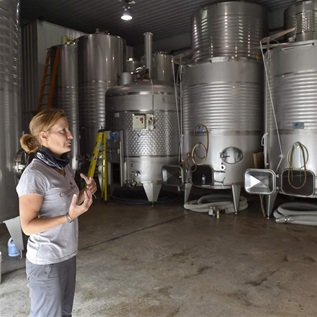Workers React Positively to Steps to Make Retirement Saving More Automatic
Survey shows employees at small businesses support auto-enrollment in workplace plans
At a time when many Americans struggle to set aside enough money for retirement, government policymakers and employers are increasingly considering programs to help them save, known as pro-savings tools. And recent surveys by The Pew Charitable Trusts show that workers at small to midsize businesses—both those that have workplace retirement plans and those that don’t—generally support these ideas.
In some states, for example, policymakers are looking at state-sponsored individual retirement accounts (IRAs) that automatically enroll eligible workers whose employers do not offer plans. The workers can choose to opt out of these auto-IRAs. Payroll contributions would be sent to accounts managed by a financial services firm.
Among workers without access to an employer-sponsored retirement plan, 64 percent said they would remain in a state-sponsored auto-IRA if it was offered. After hearing the details, only 13 percent said they would opt out. Still, one-quarter said they did not know what they would do. By default, they would be enrolled unless they opted out during a set time period, but that uncertainty means these workers might be less likely to stay in the program.
The survey randomly divided workers without access to an employer-sponsored plan into two groups: One heard details about a program with a default employee contribution rate of 3 percent of pay; the other was presented with a 6 percent default rate. The share who said they would opt out was about the same, though those who were asked about the 6 percent default contribution were more likely to say they would lower the rate. This group was also somewhat more likely to say they would stay in the program as is.
Workers without access to a workplace plan generally supported automatic enrollment (73 percent) as well as automatic escalation of contributions (68 percent), which involves annual increases in contributions until they reach a certain level.
Although employers that provide retirement benefits are increasingly adding these automatic features, neither one is widely used today by small to midsize businesses that sponsor plans. In the Pew survey, workers who had access to an employer-sponsored plan but were not participating were asked about both features. Fifty-four percent said they would stay in a plan if automatically enrolled, and more than half said they support automatic escalation of plan contributions.
Among this group, reactions differed somewhat depending on the default contribution rate spelled out in the question: Those who were asked about 6 percent being taken from their paychecks were more likely to opt out than those who were asked about the 3 percent rate (19 percent versus 12 percent). Those who were asked about the higher rate also were more likely to say they would lower the contribution from the default (9 percent versus 1 percent).
Although the responses from workers with and without access to plans were similar, it is hard to compare them directly. Those without plans were asked about a state-sponsored program, while those with plans were asked about an employer-sponsored plan, possibly encouraging different responses. Although worries about government overreach or expertise in management of funds could cut into support for a state-sponsored program, that did not seem to be the case. A comparison of the results of the two surveys shows that workers without access to a plan are more likely to say they would participate in an auto-IRA sponsored by the state than are workers with access to a plan who are presented with a similar option sponsored by their employer (64 percent and 54 percent, respectively).
Moreover, regarding automatic escalation, 27 percent of those who have access to a plan but who do not participate said that they did not like the idea as part of an employer-sponsored plan. Among those without access to a plan, 20 percent somewhat or strongly opposed this feature in a state-sponsored plan.
The survey analysis offers several takeaways for policymakers. First, workers generally like pro-savings features, whether as part of a state-sponsored program or their employer-sponsored plan. Second, although 40 percent of employers in a separate survey said that their employees would oppose automatic enrollment, responses from workers were generally favorable. Those without access to a plan were more supportive of pro-savings features than those who had access but did not participate. Those without access may be looking for ways to save for retirement.
Finally, the results indicate that policymakers looking to increase savings through state-sponsored programs can feel more confident that using a higher-default employee contribution rate will not reduce employee participation, given that opt-out rates were comparable for those who were asked about 3 or 6 percent being taken from their paychecks. These findings suggest that workers, especially those without access to opportunities to save through their employers, would respond positively to a state-sponsored auto-IRA program.
John Scott directs The Pew Charitable Trusts’ retirement savings project, and Sarah Spell is a senior associate with the project.












